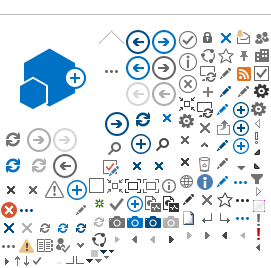Developing Solutions: Using Check In, Check Out and Save
After you create a Solution, you must first Check In the Solution before you can Save the Solution. Checking in the Solution commits the Solution to the Workspace Database. Once you have Checked In your Solution, it can be viewed, checked out and edited by other BPM Designer Users. As with any Check In event, you must determine how you wish BPM Designer to calculate the Version Number: by increasing the Major, Minor or Revision Check In Type. Your first Check In, then, can have a Version Number of: 1.0.0 or 0.1.0 or 0.0.1. Additionally, with every Check In you have an opportunity to provide Comments, which will appear with the corresponding Version of each Solution Item included in the Check In event when viewed in the Version History of a Solution Item.
For example, let's say you create a new Solution, consisting of 2 Processes. During your first Check In of the Solution, including both Processes, you set the Check In Type to Major and include the Comment text, "Initial Check In of Process A & Process B." When another BPM Designer User views the Version History of Process A, she will see the first Version of this Process is numbered as 1.0.0 and includes the Comment "Initial Check In of Process A & Process B."
It is important to note that the Check In Type determines how BPM Designer will increase the Version Number for each Solution Item included in the Check In event, but does not determine the actual Version Number.
To continue the previous example, you return the next day to your Solution and update it by adding a Data Model to the Solution. Then, you Check Out Process A and create a Data Item to use this new Data Model. Lastly, you Check In your new Data Model and Process A, using a Check In Type of Revision but not providing any Comments. Your Data Model then shows a single Version in the Version History, Version 0.0.1 and does not have any associated Comments. Process A, however, shows 2 Versions: 1.0.0 with Comments, "Initial Check In of Process A & Process B" and 1.0.1 without any Comments. Process B also shows a single Version, 1.0.0 with the associated Comment, but does not show a second Version as you did not include Process B in the Check Out of Solution Items on the second day, nor in your the Check In event.
Only a Check In event makes your changes available to other Users. So, let's say you continue working with Data Model A and reach the end of the day without having completed your design. Simply Save your work but do not Check In the Data Model. When you return to the Solution in BPM Designer, the Data Model will display your changes because you have saved these changes. However, no other User can view these changes nor can any other User update the Data Model because you have Checked Out the Data Model. Later, your Supervisor decides the additional elements of the Data Model are no longer needed in your Solution design, so you want to undo all of the changes to the Data Model since it was last available for all Users; select Undo Check Out, which removes the saved information associated only with you as a User and your Check Out as an event as well as makes the Data Model available for editing (Check Out) by other Users.
You can then use the Check Out, Save and Check In functions to track your Solution Items through many Versions. Each Version Number will change based upon the Check In Type selected for each Check In event, where the Version Number is associated with the Solution Item (including the Properties of the Solution itself). Any Comments included in a Check In event are associated with the Version History of the Solution Items included in the Check In event. To open a previous Version of a Solution Item, right-click on the Solution Item in BPM Designer's Solution Explorer and select "View Version History" from the context menu, which opens the Solution Item's Version History window:
You can then read through the Comments, select the Version of the Solution Item you wish to Edit and click [Get Selected Version], allowing you to return to any point of your design saved via a Check In event.
Recommended Best Practices:
- Check Out your Solution Items only when you are ready to Edit your configuration
- Save your Solution Items frequently
- During Check In, remember that each Solution Item selected will include the same Comments.
- Always provide Comments during Check In and make sure your Comments indicate what changes were made for every Solution Item in the Check In event
- Working with the other members of your team, develop a standard methodology for what constitutes a Major, Minor or Revision update to a Solution Item and then make sure to select the appropriate Check In Type: Revision, Minor or Major.

